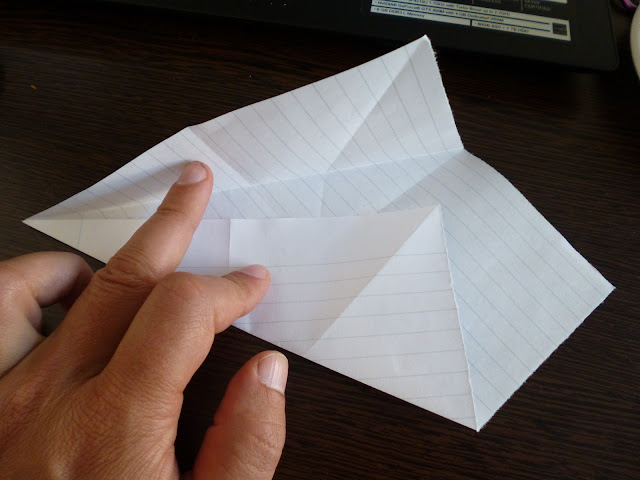In some of the previous posts I showed models and use of my double Tent-Cape, but there was another manner of folding sheet of fabric in the form of tent, which I used when in need during the last 20 years. This type of tent uses square sheet of waterproofed fabric (tarp) with sizes 2x2m (which is most suitable for my height of 1.8m, but in a pinch I would use 1.8x1.8m/6x6ft). This tent is much shorter and not very comfortable, but is simpler, uses smaller square sheet and allow me to sit inside. This sheet can be used as hammock and rain-cape also.
The pitching up requires first to pin down with a peg one of the corners, after that to stretch the sheet and pin down the middle of the opposite side. After that fix down the pole, which is longer then the half of one of the sides, After that tie the front flap to the pole and preferably tie to top of the pole with string to peg in the ground, which will pull against the first 2 pegs.
I guess for somebody it may not be very clear this explanation and I'll do video of how the pitching up is done some of the next days.
 |
| Square sheet of some water/windproof fabric |
 |
| Folding it, so we can find the middle of each side |
 |
| Mark/fold the line between corner and middle of the corresponding side |
 |
| Mark/fold the line between corner and middle of the corresponding side |
 |
| Same for the other side |
 |
| Another view to show better how it looks |
 |
| Folding the line of the front flap |
 |
| Sheet folded in the shape of the tent |
 |
| For simulating pitching up, I used 2 pins to show where are the pegs, which will stretch and fix the sheet to the ground |
 |
| For the pole which supports the tent I used toothpick. In reality it is a stick 1.4m long, from which 0.4m are nailed into the ground and is fixed with string/buttons/wire to the front flap. Also there can be used piece of string to pull the pole in the opposite of the pegs direction. |
 |
| Another view |
 |
| Real life sized model from tyvek (few months ago somebody wanted me to show him how it looks and I made this then and took picture) |



















